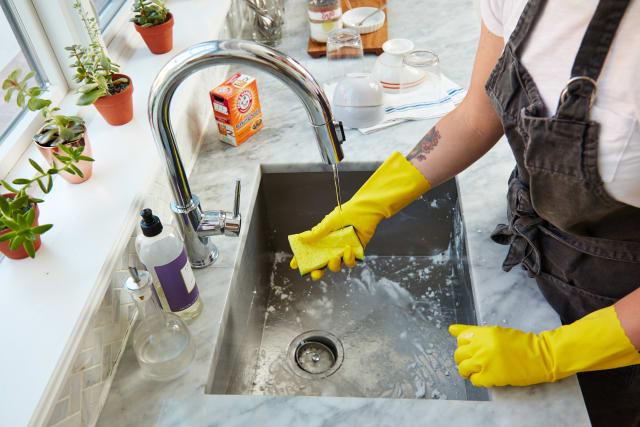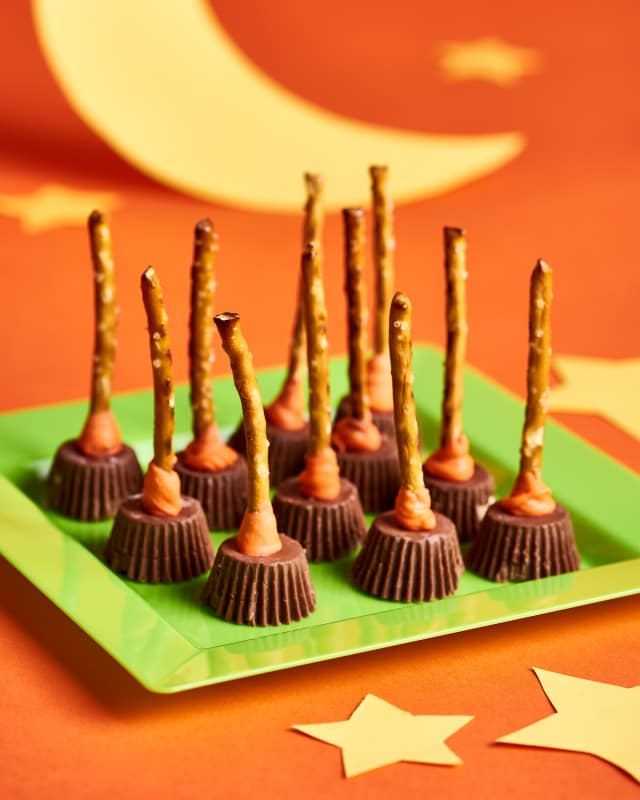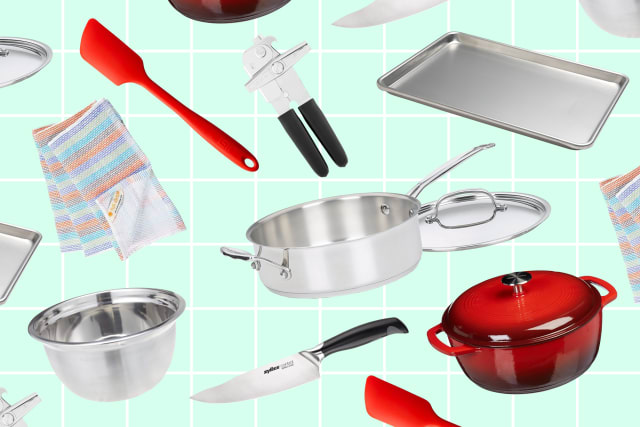This
post was originally published on
this sitehttp://www.marksdailyapple.com/
 Most people chalk urinary incontinence and excessive urgency up to age. We get old, stuff stops working, we wake up to wet sheets. Cue jokes about adult diapers and investing in “Depends” futures. It’s not entirely out of line. Aging matters. There’s just more to it. Like other aspects of “aging,” incontinence and unreasonable urgency don’t just “happen.” Aging may hasten or accompany the decline, but it’s by no means inevitable, unavoidable, or unmitigated.
Most people chalk urinary incontinence and excessive urgency up to age. We get old, stuff stops working, we wake up to wet sheets. Cue jokes about adult diapers and investing in “Depends” futures. It’s not entirely out of line. Aging matters. There’s just more to it. Like other aspects of “aging,” incontinence and unreasonable urgency don’t just “happen.” Aging may hasten or accompany the decline, but it’s by no means inevitable, unavoidable, or unmitigated.
There are surgical treatments available, many of which involve the implantation of balloons and slings and rings and hammocks. Those are beyond the scope of this post, which will focus on exercises and other less invasive interventions and preventive measures.
What’s the Deal With Urinary Incontinence?
The most well-known type is stress incontinence. When you do anything intense enough to create pressure, such as a sneeze, a particularly boisterous laugh, a trampoline session, a power clean, or a box jump, the pressure escapes through the weakest point of your body—your slack pelvic floor muscles which support and enable bladder function. The result is inadvertent leakage.
The most common type is urgency incontinence. That’s when you can control your bladder well enough, but you feel like you have to go more frequently than you’d like. This can disrupt sleep and place you in uncomfortable situations.
There’s also prostate-related urinary incontinence. If men have incontinence, it’s usually because of prostate issues or prostate surgery altering the normal flow and function of their urinary tract. Today’s post won’t deal with this explicitly, although many of the exercises I’ll discuss that help women treat incontinence can also help men treat prostate-related incontinence. For more info on this, revisit my post on prostate health from a few weeks back.
Both stress incontinence and urgency incontinence usually have the same cause: pelvic floor dysfunction. The pelvic floor acts as a taut, supple sling of muscle and connective tissue running between the pelvis and the sacrum that supports the pelvic apparatus, including organs, joints, sex organs, bladders, bowels, and various sphincters. We use it to control our urination, our bowel movements, even our sexual functions. It’s very important.
What Goes Wrong?
It gets weak and tight and pulls the sacrum inward (the tail gets pulled toward the front of the body), interfering with urination and urinary control.
What causes pelvic floor dysfunction?
Childbirth is one potential cause, but it’s not a foregone conclusion. Women who have vaginal deliveries are more likely to display more pelvic floor dysfunction than women who have cesareans, while a more recent study found that tool-assisted vaginal delivery and episiotomy were the biggest risk factors for vaginal delivery-associated incontinence, not vaginal delivery alone. Allowing passive descent in the second stage of labor, rather than active pushing from the get-go, might also reduce the association.
Muscular atrophy of the pelvic floor muscles. The pelvis is where the magic happens. It’s where we generate power, walk, run, procreate, dance, and move. To keep it happy, healthy, and strong, we have to move. And then keep moving. Through all the various ranges of space and time and possible permutations of limbs and joints. That’s what all our muscles expect from the environment. It’s what they need. When that doesn’t happen, they atrophy—just like the other muscles.
Who Develops Incontinence?
Stress incontinence is more common among women than men. And most women with stress incontinence are older, although childbirth can increase the incidence.
Signs of Poor Pelvic Floor Function
Besides urinary incontinence and urgency incontinence—which are pretty tough to miss—what are some warning signs of poor pelvic floor function?
Low-to-no glute activity when walking. According to expert Katy Bowman, the glutes play a crucial role in pelvic floor function and incontinence prevention.
Lack of lower back curvature. This suggests your pelvis is being pulled inward due to poor glute activity and/or overly tight pelvic floor musculature.
Muscle atrophy elsewhere. If the muscle’s disappearing from your arms and legs, what do you think is happening in other areas?
What Can You Do?
Work On Your Squat
If you can’t sit in a full squat, with shins fairly vertical and heels down on the ground, you need to work on your form.
I suggest reading this old post by Kelly Starrett describing optimal squat form. He focuses on performance and strength training, but the technique applies equally to basic bodyweight squatting for pelvic floor health.
One thing to emphasize: go as low as you can without reaching “butt wink” threshold. The butt wink is when the pelvis begins rotating backward underneath the body. If you’re butt winking all over the place, you’re shortchanging your glutes and preventing them from balancing out the pelvic floor situation. Stop short of the butt wink.
Squat a Lot
You don’t have to load up the bar, although that’s a great way to build glute strength. In fact, I’d refrain from heavy squatting if you’re currently suffering from urinary incontinence, as the stress placed on that region of the body during a heavy squat can make the problem worse and cause, well, leakage.
I’m mainly talking about everyday squatting: while playing with the kids, picking up dog poop, unloading the dishwasher, brushing your teeth, cleaning the house, gardening. If you can incorporate squatting while using the bathroom, perhaps with a Squatty Potty or similar product, that’s even better. Katy Bowman recommends women squat to pee in the shower as an integral part of her therapy for pelvic floor disorder.
Squat To Use the Toilet (or At Least Get Your Feet Up)
I wrote an entire post almost ten years ago exploring the virtues of squatting to poop. Not only does it improve symptoms in hemorrhoid sufferers, reduce straining, and alleviate constipation, but squatting to poop turns out to relieve a lot of excessive pressure on the pelvic floor musculature.
Not everyone’s going to hoist themselves up over the toilet standing on a stack of thick books, or go all out and build a Southeast Asian-style squat toilet in their bathroom, or even get the Squatty Potty. It’s probably the best way to do it—and it’s certainly the most evolutionarily concordant way to poop—but it’s not totally necessary. What matters most is getting those feet up and those knees above your hips. If you can achieve this by placing your feet on a stool (not that kind of stool) as you sit on the toilet, it should do the trick.
Take a Walk and Feel Yourself Up
Next time you walk, rest your palms on the upper swell of your butt cheeks. Every time you step through, you should feel your glutes contract. If they contract, awesome. You’re unconsciously using your glutes to propel yourself forward. If they don’t, you’ll have to train them to contract when you walk.
Do this by going for a ten minute walk (minimum) every single day while feeling your glutes. Consciously contract them enough and feel yourself up enough and the resultant biofeedback will make glute activation a passive behavior, like breathing. Eventually you’ll start doing it without thinking. That’s the goal.
Do Kegels—Differently
The classic therapy for pelvic floor disorder is to train the pelvic floor muscles directly using kegels. This is the muscle you contract to stop yourself from peeing midstream. “Doing kegels” means contracting and releasing that muscle for sets and reps. A common recommendation is to hold for ten seconds, release for ten seconds, repeated throughout the day. Waiting in line? Kegels. Eating dinner? Do some kegels. Remember that man at the DMV last week who would randomly tense up and start sweating as you both waited for your number? He was probably doing kegels.
It’s definitely part of the story—studies show kegels work in men, women, and seniors—but it’s not enough.
Consider Katy Bowman’s take on the subject. She thinks kegels by themselves make the problem worse by creating a tight but ultimately weakened pelvic floor muscle that pulls the sacrum further inward. Combine that with weak or underactive glutes that should be balancing the anterior pull on the sacrum but don’t and you end up with rising pelvic floor dysfunction and incontinence. She recommends doing kegels while in the squat position to ensure that the glutes are engaged and all the other contributing muscles are in balance.
Do More Than Kegels
The bad news is that we don’t have controlled trials of Katy Bowman’s protocols with deep squats and frequent daily movement and going barefoot over varied surfaces and squat toilets. We mostly just have basic “pelvic floor exercises,” which usually just mean “kegels.” The good news is that even these suboptimal exercise therapies seem to work on anyone with incontinence, whether they’re just coming off a pregnancy, a 70th birthday, or a prostate procedure. Young, old, middle-aged, male, female—exercise works.
Actually, we do have one small study that suggests kegels will work much better if you balance them out with exercises that target the glutes and hips. In the study, women suffering from urinary incontinence were split into two treatment groups. One group did pelvic floor muscle exercises (kegels). The other group did pelvic floor muscle exercises, plus exercises to strengthen the hip adductors, the glute medius, and glute maximus. Both groups improved symptoms, but the group that did the combo exercises had better results.
For hip adduction, you can use that hip adduction machine where you straddle the chair with legs spread and bring your knees together against resistance. Another option is to use resistance bands. Attach one end of the band to a secure structure and the other to your ankle. Stand with legs spread, then bring the banded leg inward toward the unbanded leg; you should feel it in your inner thigh. Do this for both legs.
For glutes, you have many options. Glute bridges, hip thrusts, squats, deadlifts, lunges, resistance band glute kickbacks.
If you want to get deep into this subject and really learn the optimal exercises for pelvic floor dysfunction, I’d pick up a copy of Katy’s Down There For Women.
Get Strong and Stay Strong
One of the strongest predictors of urinary incontinence is physical frailty. The more frail—weak, fragile, prone to falling, unable to handle stairs, unsteady on one’s feet—the man or woman, the more likely they are to suffer from urinary incontinence. This mostly comes down to muscle atrophy; the frail tend to have low muscle mass all over, including the pelvic floor.
Studies show that strength training improves urinary control in both men coming off prostate procedures and women.
The best option is to never get frail in the first place. If you’re younger and in shape, keep training and moving. Don’t lose it. If you’re younger and trending frail, get training and moving. Don’t squander the time you have. It goes quickly. If you’re older and frail, you have to start today. Fixing this doesn’t happen overnight. Being frail makes it harder to do the things necessary to get strong, but that doesn’t absolve you of the responsibility.
The Bottom Line
None of this stuff is a guarantee against incontinence. Guarantees don’t really exist in life. But I’d definitely argue that anyone who employs all the tips and advice mentioned in today’s post will have a better shot at maintaining bladder control than their doppelganger in some parallel universe who never tries anything—the earlier the better.
If you have any experience with urinary incontinence, let us know in the comments down below. What worked? What didn’t? What worked for a while, then stopped?
Thanks for reading—and sharing here. Happy Halloween, everybody.
References:
Bernstein IT. The pelvic floor muscles: muscle thickness in healthy and urinary-incontinent women measured by perineal ultrasonography with reference to the effect of pelvic floor training. Estrogen receptor studies. Neurourol Urodyn. 1997;16(4):237-75.
De araujo CC, Coelho SA, Stahlschmidt P, Juliato CRT. Does vaginal delivery cause more damage to the pelvic floor than cesarean section as determined by 3D ultrasound evaluation? A systematic review. Int Urogynecol J. 2018;29(5):639-645.
Kokabi R, Yazdanpanah D. Effects of delivery mode and sociodemographic factors on postpartum stress urinary incontinency in primipara women: A prospective cohort study. J Chin Med Assoc. 2017;
Handa VL, Harris TA, Ostergard DR. Protecting the pelvic floor: obstetric management to prevent incontinence and pelvic organ prolapse. Obstet Gynecol. 1996;88(3):470-8.
Dokuzlar O, Soysal P, Isik AT. Association between serum vitamin B12 level and frailty in older adults. North Clin Istanb. 2017;4(1):22-28.
The post Urinary Urgency and Incontinence: Why It’s Not Just Age appeared first on Mark’s Daily Apple.




 Most people chalk urinary incontinence and excessive urgency up to age. We get old, stuff stops working, we wake up to wet sheets. Cue jokes about adult diapers and investing in “Depends” futures. It’s not entirely out of line. Aging matters. There’s just more to it. Like other aspects of “aging,” incontinence and unreasonable urgency don’t just “happen.” Aging may hasten or accompany the decline, but it’s by no means inevitable, unavoidable, or unmitigated.
Most people chalk urinary incontinence and excessive urgency up to age. We get old, stuff stops working, we wake up to wet sheets. Cue jokes about adult diapers and investing in “Depends” futures. It’s not entirely out of line. Aging matters. There’s just more to it. Like other aspects of “aging,” incontinence and unreasonable urgency don’t just “happen.” Aging may hasten or accompany the decline, but it’s by no means inevitable, unavoidable, or unmitigated.







 For now classes are 6pm and 640pm at 2840 Wildwood st in the Boise Cloggers studio.
Book your class NOW!
click this ==>
For now classes are 6pm and 640pm at 2840 Wildwood st in the Boise Cloggers studio.
Book your class NOW!
click this ==>








